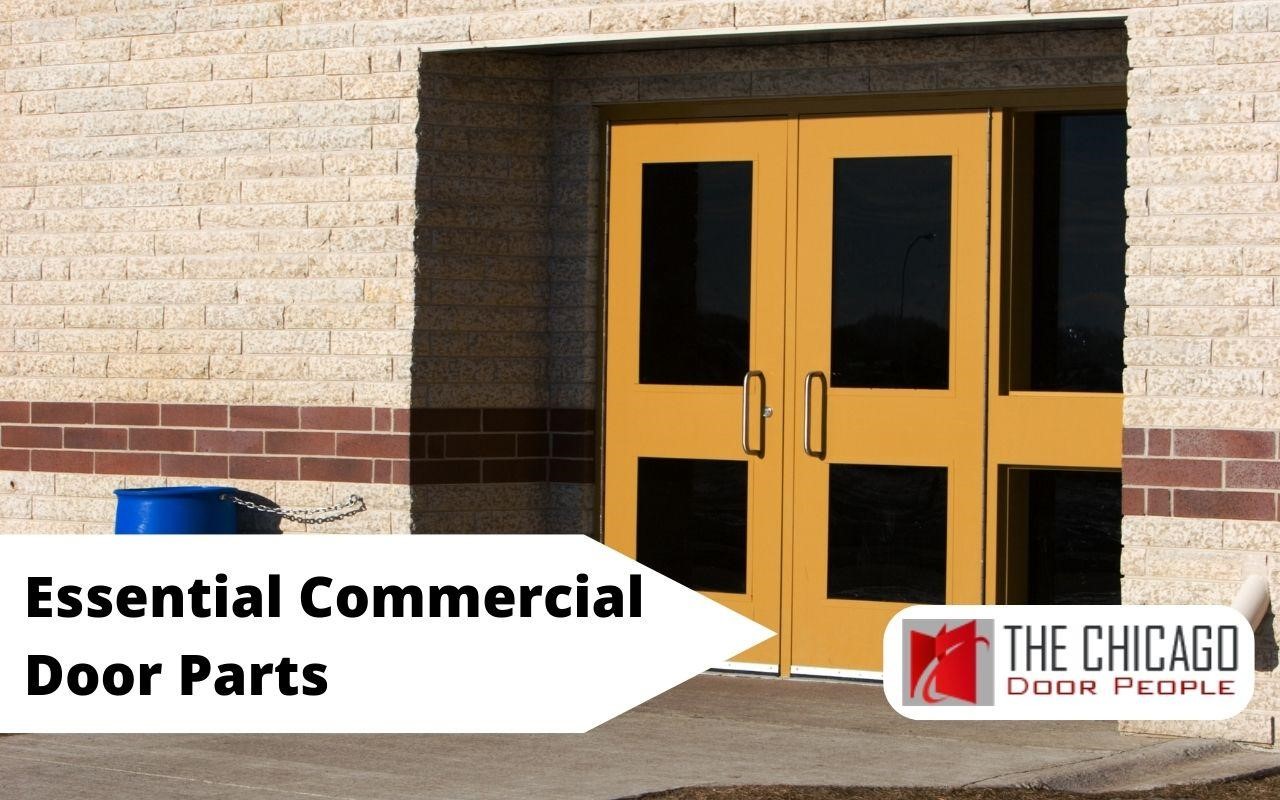It is common to see a lot of terminology and names that we do not typically understand when it comes to door commercial door parts. People often pay no mind to know this kind of stuff; nonetheless, it helps you pick the right pieces to improve your doors’ quality, safety, and design. In this article, you will learn about the essential Commercial Door Parts so that you can make the best decisions.
Essential Commercial Door Parts

Double Doors
As there are single doors, there are commercial doors with double leaves.
Active Leaf
The active leaf on a double door is the one that opens first. Additionally, this leaf is usually the one that has the main operating software. This can be a lock, latch, or another type.
Inactive Leaf
This door leaf opens after the active. Instead of having a lock, this one possesses a strike to receive the lock/latch bolt of the functional door. Likewise, this one has surface bolts or flush bolts on the door face or meeting edge, respectively.
Parts only for Double Doors

Flush Bolts
These are installed on the door’s vertical edge opposite the hinge edge and flush with the edge. Their purpose is to hold the inactive door secure when the door is closed; that is why they are permanently installed in the inactive leaf. There are three different ways of operating flush bolts, and they are the following:
Manual
They work with a small mechanical lever that projects or retracts the bolt.
Semi-automatic
Retracted using a mechanical trigger and will then re-latch when the active leaf closes.
Automatic
Rods are deployed automatically into the door frame header and floor when the active leaf is closed.
Coordinators
As stated by its name, this type intends to coordinate the closing of the doors. Typically, the inactive leaf needs to be closed before the active leaf, so they are appropriately closed and not left unsecured. The most common type of coordinator is a bar installed at the head of the frame that faces the door from push side to opening. When coming in contact with the face of the door, two triggers on either end of the coordinator bar are depression. The inactive door will hold the inactive door open until the active one pushes the trigger on the other end of the coordinator bar to ensure proper closing.
Mounting Brackets
You can use mounting brackets only if you have a commercial double door with coordinators. You must install the closers using parallel arms, as they are fastened to the soffit on the head section of the door frame. Mounting brackets come with holes for fastening the brackets to the frame. And there is generally a blank plate portion that allows you to drill the holes needed for the parallel shoe hole pattern.
Astragals
This type of hardware covers the gap between the doors. There are two main styles of astragal: overlapping and meeting style. The first one is installed to the edge of one of the door leaves and extends to overlap the edge of the other door. It should be noted that astragals should only be used indoors with a specific opening order; otherwise, the astragal would block the other door. Conversely, the meeting stile astragal has two parts installed on each door leaf’s edge. They meet in the middle to seal the gap when the doors are closed. Additionally, the doors can open independently.
Removable Mullions
Even though they seal the gap between the doors when closed, removable mullions differ from astragals. They differ in durability because removable mullions allow rim panic devices to be installed on both doors. Likewise, mullions can be keyed, removable, or mechanically removed using a special tool. If you need to move large objects through the doors, you can detach the mullion from the frame and then attach it as needed.
Hinges
This part allows the door to swing and is the most common piece of hardware. They are attached to the door and frame to support and hang the door. They are typically made of two metal plates joined together with a pin.
Frame
This is the material that covers the door on the laterals and the upper side. This part can be found in different colors, styles, sizes, and materials. The head of the frame is known as the horizontal part that goes above the door, and the jamb is the vertical component that goes on either side of the door.
Locks
This part of the door ensures its security and that it remains closed. It includes the latch mechanism, cylinders, keys, and trim. As there are commercial doors for exterior and interior spaces, exterior doors require a more durable locking system than interior doors. The latter may require only a basic keyed entry lock.
Strike Plates
This is another essential part of the commercial door. It consists of a metal plate that is pierced to receive the bolt or latch of the lock to keep the door shut. Different from the locks, strike plates offer a more limited variety. The other option for strikes is electrical plates. They can be operated by remote control or special access control equipment.
Louver
It is an opening at the bottom of the door with a series of slats or blades to allow air passage.
Contact the Best Company for Commercial Door

Now that you know more about the terminology of commercial doors, you can select the best options for them.
However, performing a commercial door installation or repair is not that easy. It is not recommended that you perform a DIY job; instead, you can look for professional assistance. Chicago Door People offers you the best commercial door services. We have provided excellent and outstanding services for a long time; we were founded in 1982. We lead the business in Cook County, Illinois. Contact us to receive the best services.

